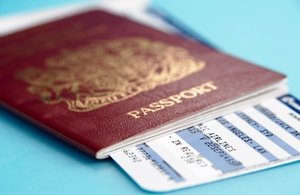Updated briefing on trends in naturalisation as a British citizen, numbers up from 2015 but down from 2009-2013 peak
The Migration Observatory at the University of Oxford has updated its useful briefing on trends in naturalisation as a British citizen.
 Image credit: UK GovernmentYou can read it here.
Image credit: UK GovernmentYou can read it here.
According to the briefing, a total of 149,400 people naturalised as British citizens in 2016, up from 118,100 in 2015. The figure for 2015 was the lowest since 2002 and the Migration Observatory notes that last year's total remains lower than the peak years of 2009 to 2013.
The briefing adds that lower numbers of citizenship applications in recent years is consistent with recent decreases in grants of settlement/indefinite leave to remain (from 241,200 in 2010 to 104,100 in 2014 and 89,900 in 2015), which will have reduced the pool of people newly eligible to apply for citizenship.
The three main grounds for British citizenship grants in 2016 were migrants fulfilling the five-year residency requirement (52% of the total), marriage/civil partnership (18%) and underage children being registered as British citizens (25%).
88% of grants of British citizenship in 2016 were to non-EU nationals, with the top five nationalities being India (16%), Pakistan (11%), Nigeria (7%), South Africa (3%) and Bangladesh (3%).
The only EU or European country in the top ten was Poland (in sixth place with 3% of citizenship grants). The first three months of 2017, however, saw a record 9,500 applications for naturalisation by EU nationals, over three times the average in the corresponding period for the years 2009 to 2016.
Adults aged 25-44 comprised the majority of naturalising citizens last year (55% of the total), while 25% were children aged under 16.
The Migration Observatory briefing notes that 8% of citizenship applications were rejected in 2016.
Of those rejections, the main reason for refusal was a failure to meet the 'good character' requirement (44% of rejections). Failure to demonstrate English language proficiency or knowledge of life in the UK comprised 5% of refusals.
Meanwhile, the Office for National Statistics' (ONS) annual report on births in England and Wales for 2016 was released yesterday and shows that the percentage of births to foreign-born mothers reached a record high of 28%.
The ONS noted that this percentage has increased every year since 1990, when it was 11.6%, and it attributes the reason for the increase to the fact that fertility levels are generally higher among foreign-born women and a higher proportion of foreign-born women are aged from 25 to 34.